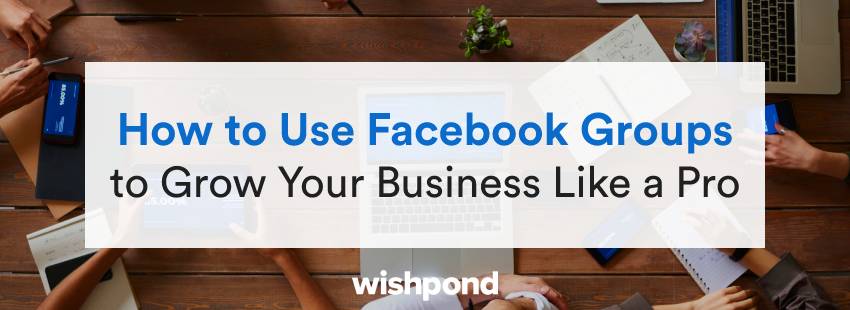“Whatever you rock, there’s a Facebook group for you,” says the $10-million Superbowl Facebook ad that was part of Facebook’s “More together” campaign, whose aim was to encourage users to join Facebook groups in their areas of interest.
Facebook’s focus on promoting groups was in fact in line with their 2018 announcement regarding the change of policy towards users’ privacy, prioritizing Facebook groups as the means to make a “privacy-focused social platform”. Today, they are easier to discover and participate in, and their content is shown in users’ general news feeds more often.
In that regard, groups on Facebook have an unrivaled capacity to increase your visibility and user engagement. In fact, when we spoke to client acquisition specialist Amy Walker, she listed using Facebook groups as one of her most effective free organic lead generation hacks. As she put it:
“Facebook groups get good visibility – more than your business page BY FAR.”
In this guide, we will show you how to create and manage them to amplify your voice, engage your users, and as a result, grow your business.
How to create a Facebook group
Using your personal account, click on the Groups icon above your Facebook page.

Then click “Create new group”. On the page that opens, assign a name to your group, choose its privacy level (public or private), if private then visible or hidden, and decide if you want to invite your friends there. Then click “Create”. You have officially started your own Facebook group.
If you want to manage your group through your business page, you can link it with your page (see attached screenshot).
To do this, open your business page, then in the top menu click “more”, then “Groups”. If you can’t see the “Groups” tab, you first need to click on “edit tabs” and then add the “Groups” tab to the menu.
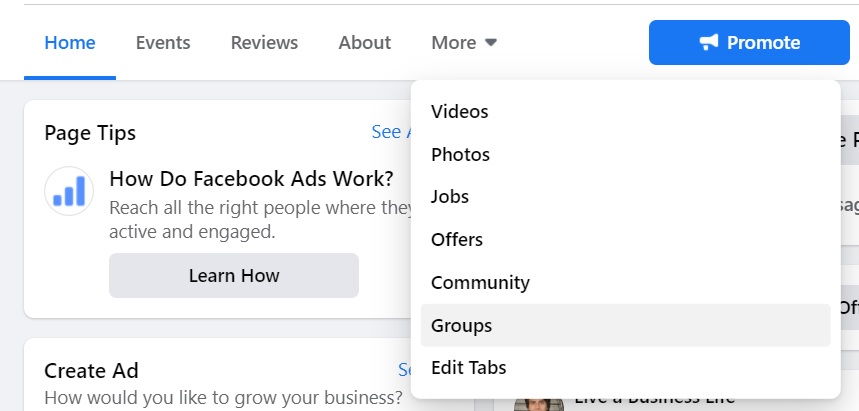
Once you’re in the Groups section of your page, you can link your existing groups to your page or create a linked group.
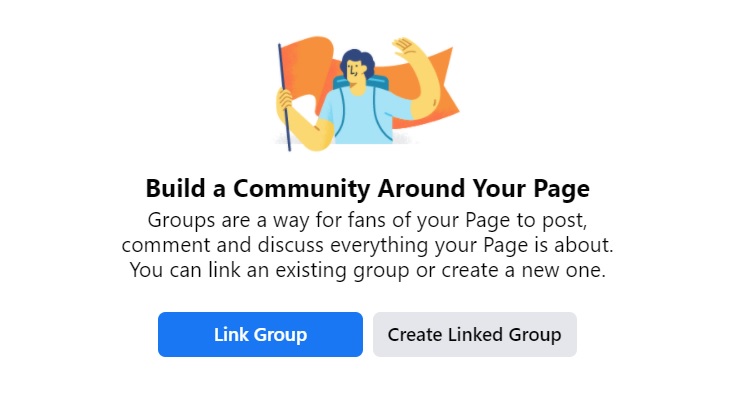
How can your Facebook group grow your business?
Facebook groups are communities, and people are naturally interested in joining communities and interacting with other members. The engagement that a business group can create for your (potential) customers is unparalleled. Here’s how your group could grow your business.
1. It can increase your organic reach
In 2018, Facebook’s algorithm started prioritizing posts that encourage more human interactions. Posts from friends, family, and groups were to be shown more frequently in the news feed as Mark Zuckerberg himself noted in a 2018 Facebook post.
The aftermath for businesses on Facebook was that the organic reach of their business page content declined more than ever. On the other hand, the businesses that had invested in Facebook groups saw a bump in organic reach for the content they posted compared to the content they posted on their business page.
Since that time, having an engaged group is a must for businesses serious about increasing their organic reach on Facebook. Obviously, an engaged audience will share your content with their friends and families thus making your content more worthwhile.
2. Use it as a powerful lead magnet
If you’re looking to generate some quality leads, groups can function as your most valuable lead magnet. Lead magnets are what you offer your website visitors (typically in the form of an ebook, course, membership, etc.) in exchange for their contact information. People who are interested in your lead magnets and who submit their contact information to you are called “leads”.
Facebook groups are powerful lead magnets because:
- They form communities of like-minded people who can interact with each other and learn from their experiences.
- Much of the content in it is user-generated and people know the value of user-generated content over branded content. UGC gets more engagement.
- It’s a great place for people to ask their questions and get answers from experts
Learn how other business in your industry are getting clients. Click here to get a tailored analysis with examples.
How to use your Facebook group as a lead magnet?
Promote your community as a perk to subscribing to your email list and make the link available only to your subscribers.
Adam Enfroy uses his Facebook group for bloggers as an additional lead magnet to his free ebooks and courses. Only after you subscribe to his list and start receiving his emails can you have access to his private community link.

Creating a signup form or a dedicated landing page for your lead magnets is quite easy and with the availability of landing page builders you can get high conversion rates. A good thing about sending them to a landing page is keeping your members’ attention on the main goal – signing up instead of having them ramble off checking the whole website.
3. Use it to provide consistent customer support
Facebook groups have great potential to become places for addressing customer issues. If you’re wondering if you should prioritize customer support above anything else, here are some facts:
- Good customer support improves customer journey which in turn increases revenue “up to 15% while also boosting customer satisfaction by around 20%.” 84% of organizations working to improve customer service report an increase in revenue.
- Good customer support increases customer loyalty and customer lifetime value.
- Good customer support is a word-of-mouth strategy (aka. the strongest marketing strategy). Providing a great customer experience is a good incentive for your customers to recommend you to their families and friends.
Good customer support goes beyond dedicating an email address or phone number to answering customer questions. It’s proactive in predicting customer needs and addressing them beforehand.
A study shows that a typical business only hears about 4% of its customers’ complaints while the rest of them go unnoticed. With the power of Facebook, you can get ahead of complaints and educate users through their customer journey.
Create a private group and invite your customers to join. Provide how-to guides, insights, and news about your products and your industry. This could especially be useful if you’re a business that serves an exclusive audience such as founders, entrepreneurs, investors, or writers.
The “Official Peloton Member Page” group is a large group dedicated to Peloton’s current or potential customers. Before approving your request to join the group, they show a screening question to make sure you’re a Peloton customer or are interested in becoming a Peloton member.
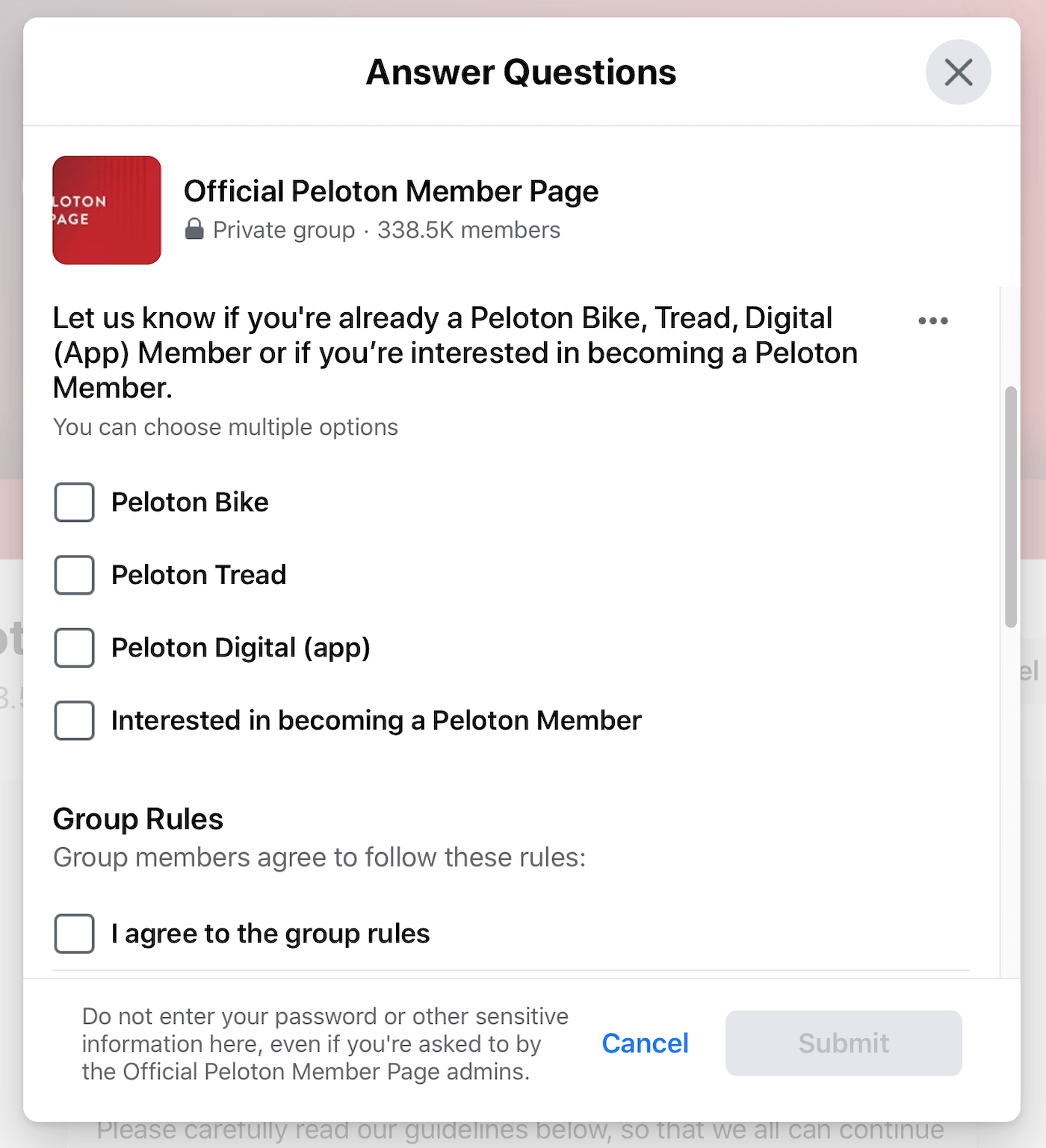
4. Use it to collect feedback and audience intelligence
Audience intelligence provides you with a clear view of your potential customers and allows you to target the right audience at the right time with the right message. Facebook communities are great places to eavesdrop on customer feedback and gain insights into their needs. It’s a great business intelligence method and it works well even if you don’t own a Facebook group.
Although it is not advised to use third-party groups for self-promotion (typically groups have strict rules against this), using third-party groups for understanding your potential customers is a great idea.
Join related groups in your industry or niche, such as the groups managed by your competitors, and watch how the members interact with each other and the business that owns the group.
- What are their questions about the products?
- What are their complaints?
- What features do they wish they could find in the product?
- What aspects of the products make them satisfied with it?
- What are their responses to the different content types posted in the group?
- What kinds of content do they engage with the most?
Answers to these questions could give you critical information that could help you do market research, develop better products and provide a better customer experience.
You can also use your group members as a focus group to conduct surveys on or post a poll for. To post a poll in your group click “create a public post” on your group page and then click the three dots
Best practices for managing your Facebook groups
Managing and growing a Facebook community takes a lot of time and effort. Here are some tips:
State the rules upfront:
As your group grows, it gets more difficult to moderate. Stating your group rules and showing them to your members upfront is a good way to prevent any misconduct.
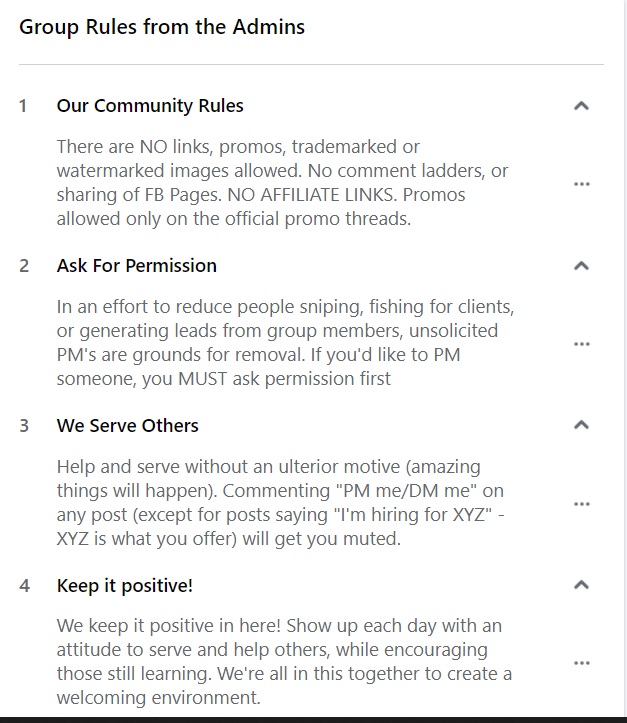
The rules you set for your groups depend on your group’s type and goal to a large extent, but generally for your business group page to function properly you need to remind members to:
- Avoid posting any promotional content. You need to be clear on what you mean by this (promoting themselves, your competitors, posting links, etc.)
- Keep the conversations in line with the aim of the group and avoid irrelevant discussions including political discussions.
- Respect others and avoid hate-speech at any cost.
To edit your group’s rules head to the “Manage Group” menu on the left-hand side of your screen, then “Admin Tools” and click “Group Rules”.
Define who should join the group:
One step to keep your group engaged is making sure it has the right members, the members that are interested in you and your content rather than outsider spammers.
Decide who you’d like to be part of your group by defining the prerequisites for your members.
- Should they necessarily be customers because you have a customer support group?
- Should they have jobs in a particular niche or have some experience or expertise because you want to avoid beginner discussions?
- Should they be living in a particular area because you have a local group?
To make sure the right people join your group, you can ask membership questions when someone requests to join. You can then review their answers and only approve the ones that have your prerequisites.
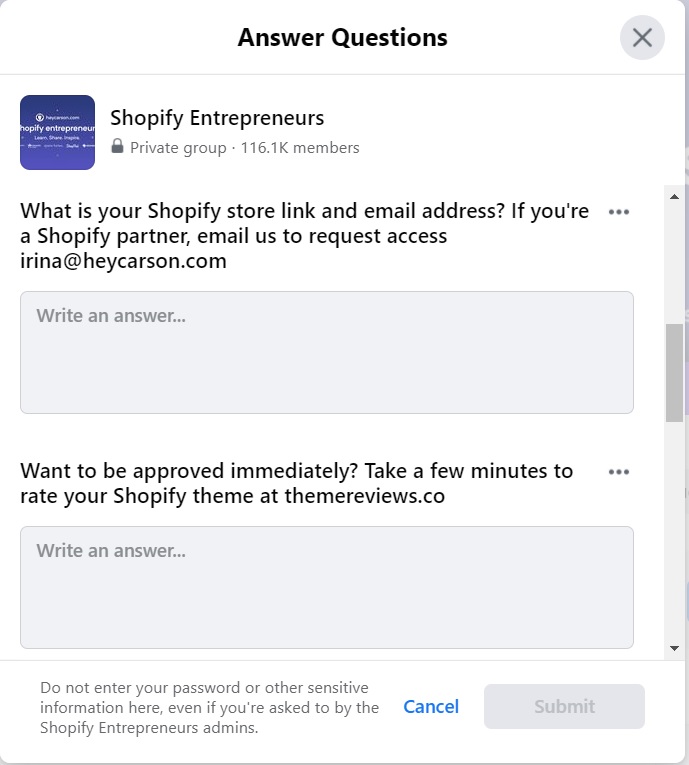
You can edit membership questions by clicking “Membership Questions” in the “Admin Tools” section of the “Manage Group” menu on the left-hand side of your screen.
Engage with members:
To have an engaged group, it’s not just enough to have the right members. You need to engage with them regularly as well.
Post content regularly:
The main reason people would want to join your community is the content that you post there. Keep the quality of your content high to keep your members engaged.
- Produce useful how-to guides to teach the best ways you’re customers can use your products.
- Facebook groups are great places to post visual content. In particular, videos seem to be more engaging than other content types. You can also create “rooms” in your group for live video chats. You can find this feature in the main menu of your group, next to “Discussion”.
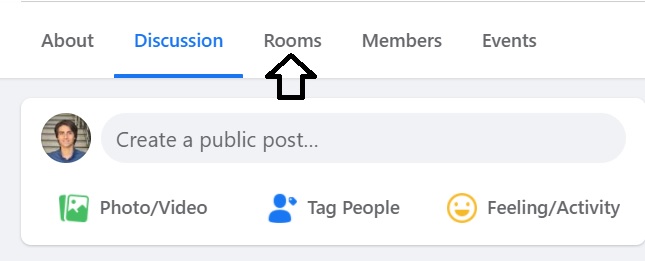
- Produce unique content addressing your customers’ top issues. Seek customer insights from your sales and customer support teams and use them to produce useful content.
Encourage conversations:
Apart from the original content, you can post in your group, as the moderator of a community, you need to start meaningful conversations among your members.
These conversations could have many use cases for you. For one thing, the more you hear from your customers the more insights you have from them: like the issues they have and how you can help solve them. For another, the kind of content that your customers produce is in fact user-generated content (UGC). UGC has a huge influence on your conversions. A survey by Stackla shows that “79 percent of people say user-generated content highly impacts their purchasing decisions.”
Here are some ways to encourage meaningful conversations among your members:
- Pin a post in your group and remind your members of the goals and values of your group. Encourage members to ask questions and participate in answering each other’s questions.
- Welcome new members and encourage them to introduce themselves, their expertise, and if they’re working on a specific project that might need help from others.
- Dedicate specific times for your members to promote their relevant projects or share personal stories.

- Appreciate top contributors. Consider giving away rewards to people who participate the most in your group.

Use analytics:
Facebook group’s insights are available for groups with more than 50 members. You can find “Group insights” in your group’s Admin Tools. Your group’s insights include these sections:
Top contributors: this section shows some information about your members. The demographic data (gender, age, location, etc.) of your audience is accessible in this section. You can also see your top contributors and their activities in the group.
Engagement: this section can show you what kind of content is the most engaging and also the time when your members are most active, on a daily and hourly basis. You can easily find engagement metrics (number of comments, likes, views) for your posts in a period of time and what works best.
Growth: this section gives you an overview of your membership growth. You can use this to see the results of your promotional campaigns.
You can also go beyond Facebook’s built-in analytics feature and use a third-party social media analytics tool that can help provide additional insights that Facebook would not provide.
Sell More with less worries. Learn how Wishpond can help you. Click here to get started.
Final Thoughts
Facebook has prioritized content in groups over typical branded content. As a result, there is no better way to increase your organic reach on Facebook than by forming an active group.
The biggest reason to create a Facebook community is the boost in organic visibility, but also it’s a powerful customer engagement tool. Groups can be a
great lead magnet, a customer-centric support center, and a place to collect feedback from your customers. There are many ways to use them, you just need to find the perfect fit for your business.

Written by our guest writer Mostafa Dastras, The Digital Project Manager
His work has appeared on some top publications such as HubSpot, WordStream, SmartInsights, LeadPages, Sendinblue and MarketingProfs. Visit his blog, LiveaBusinessLife or reach out via social to connect with him.

